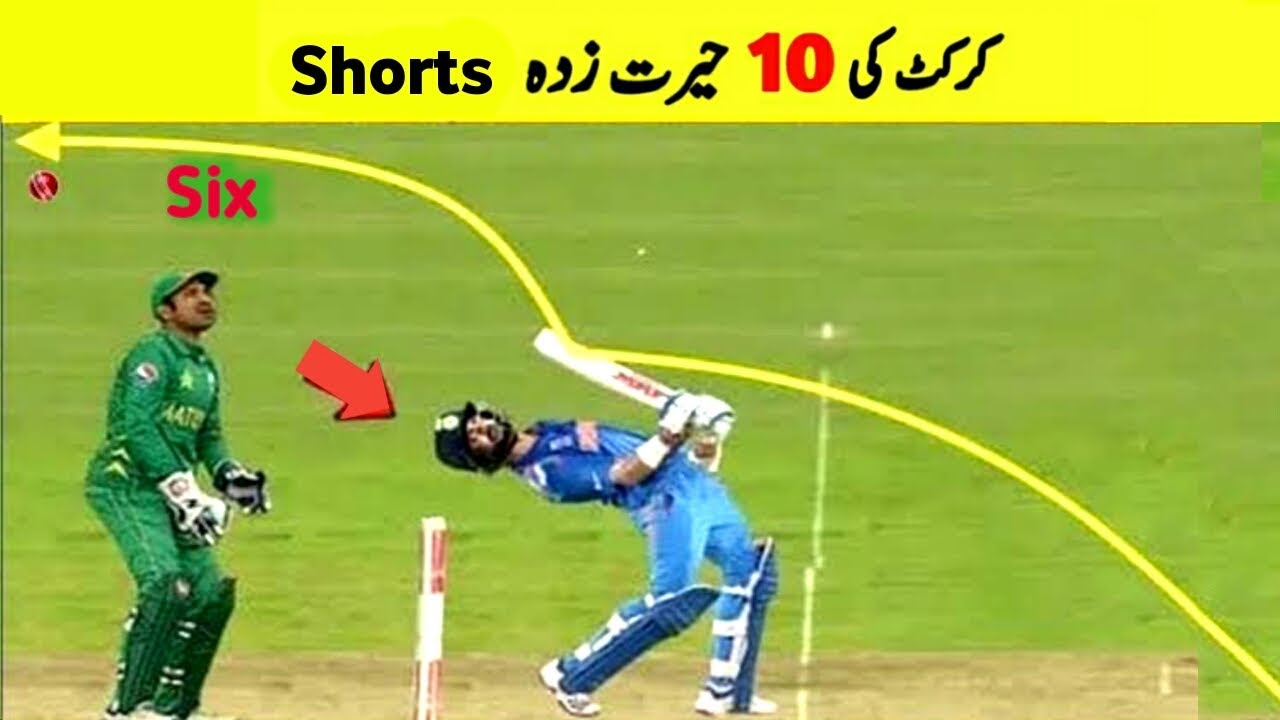Introduction
Welcome to a world where cricket meets creativity, where players defy convention and astound us with their innovation. Cricket is a sport known for its tradition and technique, but it’s also a canvas for some of the most inventive and daring shots in the world of sports. In this blog post, we’ll explore some of the most creative
1. The Reverse Sweep
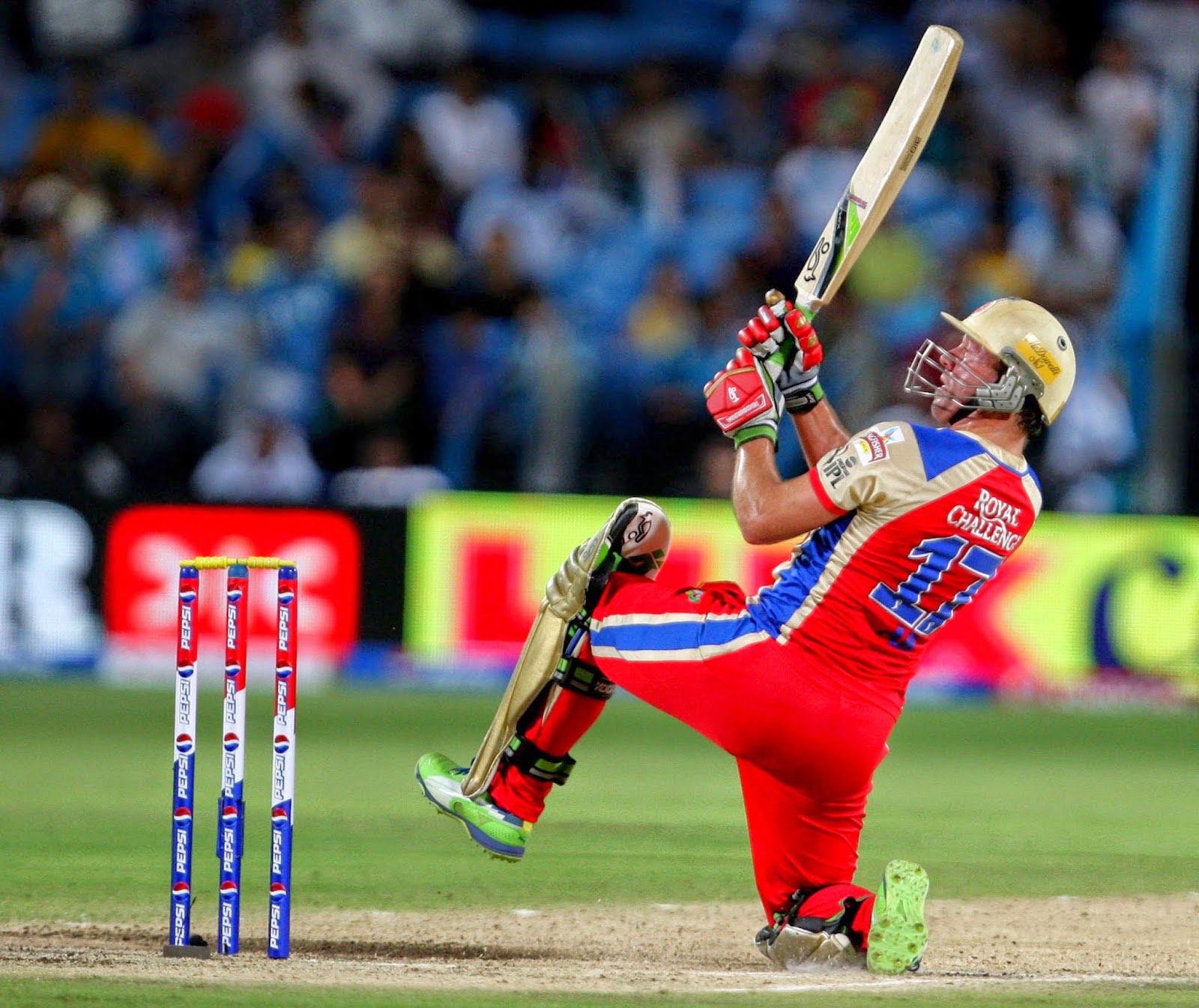
The reverse sweep is a breathtaking and unconventional cricket shot that has the power to turn the game on its head. This shot involves the batsman reversing their grip on the bat and playing the ball towards the leg side, which is opposite to their normal batting stance. It’s a high-risk, high-reward shot that requires exceptional skill and timing.
Key Points about the Reverse Sweep:
- Batsman’s Grip: To execute the reverse sweep, the batsman switches their grip, so their top hand becomes their bottom hand, and vice versa. This grip change allows them to angle the blade of the bat towards the leg side.
- Surprising the Fielding Team: The reverse sweep often catches fielding teams off guard because it goes against the conventional field placements. Bowlers and fielders have to quickly adapt to this unexpected shot.
- Scoring Opportunities: The reverse sweep can be used as a scoring weapon, especially against spin bowlers. It can find gaps in the field and fetch boundaries when played effectively.
- Risk Factor: While the reverse sweep can yield runs, it’s also a high-risk shot. If mistimed, it can lead to the batsman’s dismissal. This makes it a choice that demands precision and confidence.
The reverse sweep is famously associated with legendary cricketers like Sachin Tendulkar and AB de Villiers, who have demonstrated its effectiveness at the highest level of the game. It’s a shot that showcases not only a batsman’s technical prowess but also their ability to innovate under pressure.
| Date | Player | Match | Outcome |
|---|---|---|---|
| March 1, 2008 | Sachin Tendulkar | India vs. Australia | India won by 18 runs |
| June 3, 2012 | AB de Villiers | South Africa vs. England | South Africa won by 80 runs |
These instances reflect how the reverse sweep can not only change the course of a match but also become a defining moment in a batsman’s career. It remains one of the most thrilling shots in cricket, admired by fans and feared by bowlers.
2. The Helicopter Shot
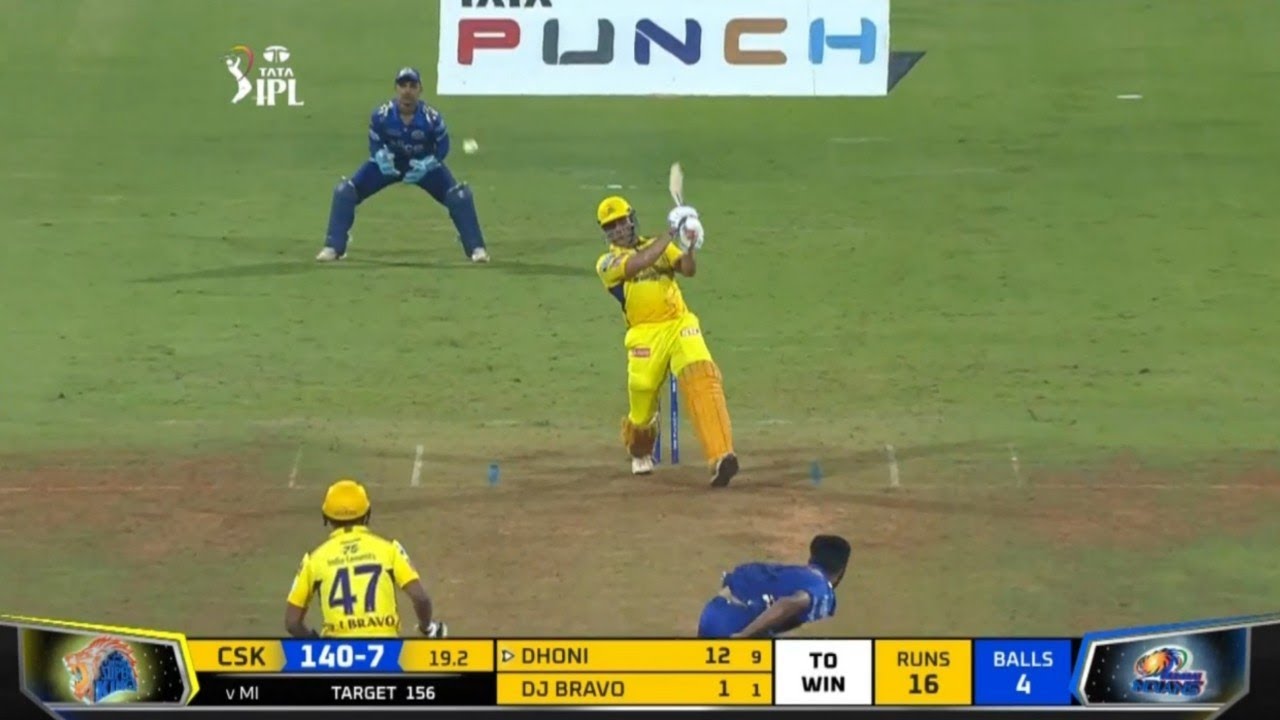
The helicopter shot is one of the most iconic and visually captivating cricket shots, made famous by former Indian cricket team captain, Mahendra Singh Dhoni. This shot is known for its sheer power and unorthodox technique, making it a crowd-pleaser whenever it’s executed on the field.
Key Features of the Helicopter Shot:
- Unique Grip: To play the helicopter shot, a batsman employs a specialized grip. Their top hand slides down the handle towards the bottom, allowing them to generate immense power in a small swing.
- Wrist Power: The real magic of the helicopter shot lies in the wrists. As the ball approaches, the batsman uses their wrists to whip the bat around their body, making contact with the ball with incredible force.
- Flat Bat Swing: Unlike traditional cricket shots, the helicopter shot is played with a flat bat, resulting in powerful flat hits that often clear the boundary ropes.
- Effective in Limited Overs Cricket: The helicopter shot is particularly effective in limited-overs formats like One Day Internationals (ODIs) and Twenty20 (T20) cricket. It can quickly accumulate runs in pressure situations.
Notable Instances of the Helicopter Shot:
| Date | Player | Match | Outcome |
|---|---|---|---|
| April 2, 2011 | M.S. Dhoni | India vs. Sri Lanka (ICC Cricket World Cup Final) | India won by 6 wickets |
| April 3, 2016 | M.S. Dhoni | India vs. Bangladesh (ICC World Twenty20) | India won by 1 run |
M.S. Dhoni’s mastery of the helicopter shot has made him a cricketing legend, and his ability to use this unorthodox stroke to great effect in crucial situations has earned him a place in cricketing folklore.
While the helicopter shot is difficult to execute, its sheer spectacle and the moments it has created have made it an integral part of modern cricket. Fans around the world eagerly anticipate the sight of a helicopter shot soaring over the boundary ropes, a testament to the innovation and excitement that
3. The Dil-scoop

The Dil-scoop, also known as the Dilscoop, is a remarkable cricketing innovation that has revolutionized the game. This audacious shot was popularized by Sri Lankan cricketer Tillakaratne Dilshan and has since been adopted by several batsmen worldwide.
Key Characteristics of the Dil-scoop:
- Bold Risk-Taking: The Dil-scoop is a shot that embodies the spirit of risk-taking in cricket. The batsman, often in limited-overs formats, scoops the ball over the wicketkeeper’s head to the fine leg region. This shot is played to deliveries pitched up by the bowler.
- Wrist Control: A crucial aspect of the Dil-scoop is wrist control. The batsman uses their wrists to change the direction of the shot at the last moment, surprising the bowler and fielders.
- Placement over Power: Unlike power-hitting shots, the Dil-scoop relies more on placement and timing. Batsmen use this shot to find gaps in the field and hit boundaries.
- Effective Against Pace Bowlers: The Dil-scoop is particularly effective against fast bowlers who deliver pace and bounce. It’s a strategy to neutralize the pace and take advantage of the field placements in limited-overs cricket.
Notable Moments with the Dil-scoop:
| Date | Player | Match | Outcome |
|---|---|---|---|
| June 14, 2009 | Tillakaratne Dilshan | Sri Lanka vs. Pakistan (ICC World Twenty20) | Sri Lanka won by 48 runs |
| February 21, 2010 | AB de Villiers | South Africa vs. India (ODI) | South Africa won by 33 runs |
The Dil-scoop has added a new dimension to the modern game of cricket. Batsmen like Tillakaratne Dilshan and AB de Villiers have demonstrated that innovation and audacity can be game-changing. While it remains a risky shot, its execution can leave spectators in awe and opposition bowlers in disbelief.
As cricket continues to evolve, the Dil-scoop stands as a testament to the creativity and adaptability of batsmen. It’s a shot that adds excitement and unpredictability to the sport, reminding us that in cricket, there are always new ways to score and new shots to invent.
4. The Switch Hit

The switch hit is a cricket shot that has redefined the boundaries of innovation in the sport. Popularized by the Australian cricketer Glenn Maxwell, this shot involves the batsman changing their stance and grip just before the bowler delivers the ball, often catching the fielding side off-guard and leaving spectators in awe.
Key Aspects of the Switch Hit:
- Stance and Grip Change: The most distinctive feature of the switch hit is the radical change in the batsman’s stance and grip. A right-handed batsman becomes a left-hander, and vice versa, before the bowler releases the ball.
- 360-Degree Hitting: The switch hit allows the batsman to access the entire field, effectively turning a delivery into an opportunity to place the ball in any direction, depending on the field placements.
- Mind Games: Besides its technical complexity, the switch hit plays mind games with the bowler and the fielding side. Bowlers struggle to adjust their line and length, while fielders have to quickly adapt to the new angles and positions.
- High-Risk, High-Reward: The switch hit is undoubtedly high-risk, as mistiming or misjudging the shot can lead to the batsman’s dismissal. However, when executed perfectly, it can result in sixes and boundaries.
Notable Instances of the Switch Hit:
| Date | Player | Match | Outcome |
|---|---|---|---|
| February 12, 2012 | Glenn Maxwell | Australia vs. Pakistan (T20 International) | Australia won by 94 runs |
| April 30, 2017 | AB de Villiers | Royal Challengers Bangalore vs. Sunrisers Hyderabad (IPL) | Royal Challengers Bangalore won by 14 runs |
The switch hit has added a new layer of excitement to modern cricket. Batsmen like Glenn Maxwell and AB de Villiers have demonstrated its effectiveness, making it a shot that is both a spectacle and a tactical advantage in limited-overs formats.
While the switch hit has been met with some debate regarding its fairness and legality, it remains a symbol of innovation and adaptability in the ever-evolving world of cricket. It challenges the norms of the game, showing that even established techniques can be reinvented to create thrilling moments on the field.
5. The Upper-Cut

The upper-cut is a thrilling cricket shot that demonstrates a batsman’s ability to not just score runs but also manipulate the field placements with precision. This shot is typically played against short-pitched deliveries from fast bowlers, and when executed correctly, it can result in spectacular boundaries.
Key Features of the Upper-Cut:
- Shot Selection: The upper-cut is chosen by the batsman when a fast bowler delivers a short-pitched ball that rises towards their shoulder or head. Instead of attempting a defensive shot or hook, the batsman takes advantage of the delivery’s bounce.
- Technique: To play the upper-cut, the batsman adjusts their stance and leans back slightly to create the necessary elevation. They then time the shot to make contact with the ball’s rising trajectory, directing it over the slip cordon or the wicketkeeper’s head.
- Placement: The placement of the upper-cut is crucial. Batsmen aim to place the ball precisely between the fielders stationed at backward point and third man, effectively splitting the field and maximizing scoring opportunities.
- Control and Timing: Successful execution of the upper-cut requires exceptional control and timing. The batsman must ensure that they don’t overhit the ball, as this can lead to mistimed shots and dismissals.
Notable Instances of the Upper-Cut:
| Date | Player | Match | Outcome |
|---|---|---|---|
| December 26, 2010 | Virender Sehwag | India vs. South Africa (Test Match) | Match drawn |
| February 22, 2015 | Aaron Finch | Australia vs. England (ODI) | Australia won by 112 runs |
The upper-cut has been employed by some of the game’s most fearless and innovative batsmen. Players like Virender Sehwag and Aaron Finch have shown that this shot can not only accumulate runs but also demoralize the opposition by dissecting the field with precision.
While the upper-cut is a high-reward shot, it also carries risks. Mistimed attempts can result in catches or even injuries. Nevertheless, it remains an integral part of a batsman’s arsenal in modern cricket, showcasing the sport’s continuous evolution and the creativity of its players.
6. The Paddle Scoop
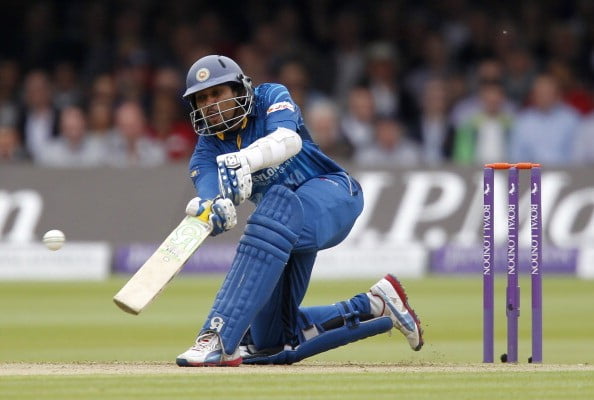
The paddle scoop, a shot that has gained popularity in limited-overs cricket, is a testament to a batsman’s innovation and audacity. This stroke is often used to outfox fielding placements and deliver runs even in challenging situations.
Key Characteristics of the Paddle Scoop:
- Subtle Wrist Movement: The paddle scoop involves a slight adjustment of the batsman’s wrist at the last moment to angle the bat face and guide the ball fine towards the leg side.
- Delivery Selection: Batsmen typically play the paddle scoop against slow or medium-pace bowlers, especially when fine leg is inside the circle and the ball is on the leg stump line.
- Placement Over Power: Unlike traditional power shots, the paddle scoop relies on precise placement rather than sheer force. Batsmen often aim to direct the ball behind the wicketkeeper or short fine leg, finding gaps in the field.
- Risk and Reward: While the paddle scoop can yield valuable runs, it carries the risk of mistiming or misjudging the ball, leading to dismissals. Batsmen need to be confident in their ability to execute this shot effectively.
Notable Instances of the Paddle Scoop:
| Date | Player | Match | Outcome |
|---|---|---|---|
| September 19, 2020 | Glenn Maxwell | Kings XI Punjab vs. Delhi Capitals (IPL) | Kings XI Punjab won by 5 wickets |
| February 6, 2018 | Mahmudullah | Bangladesh vs. Sri Lanka (T20 International) | Bangladesh won by 2 wickets |
The paddle scoop is a shot that has evolved with the changing demands of modern cricket. Batsmen like Glenn Maxwell and Mahmudullah have showcased its effectiveness, particularly in the high-pressure environment of T20 cricket.
As cricket continues to adapt to new challenges, the paddle scoop exemplifies the creative spirit of the sport. It’s a shot that challenges the traditional notions of cricket strokes, offering both batsmen and fans an exciting and unpredictable facet of the game.
7. The Marillier Shot
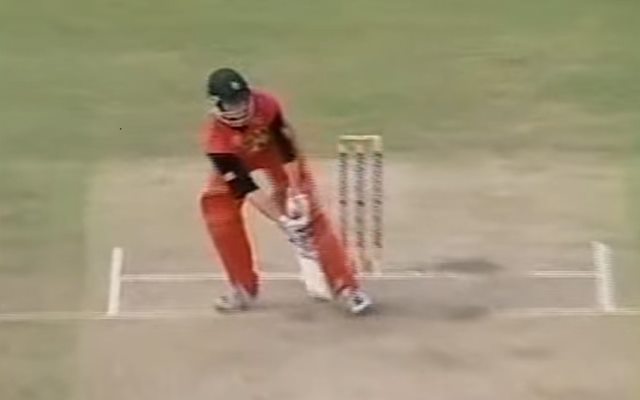
The Marillier shot is a stroke in cricket that’s named after its innovator, Zimbabwean cricketer Douglas Marillier. This audacious shot is a testament to a batsman’s ability to adapt and innovate, particularly in the face of challenging situations during the final overs of a limited-overs match.
Key Aspects of the Marillier Shot:
- Late Scoop: The Marillier shot involves a late scooping of the ball by the batsman, usually executed when the bowler delivers a yorker-length delivery. The bat is used as a ramp to lift the ball over the wicketkeeper’s head and to the boundary.
- Surprising Bowlers: Bowlers often aim for yorkers to restrict the batsmen in the death overs. The Marillier shot catches bowlers off-guard as they attempt to target the batsman’s toes, but the late scoop thwarts their plans.
- Risk and Reward: The Marillier shot is a high-risk, high-reward shot. Batsmen need impeccable timing to execute it successfully. Mistiming can lead to dismissals, but when it works, it can result in crucial runs in the slog overs.
- Influence in Limited-Overs Cricket: The Marillier shot has influenced the strategies of limited-overs cricket. Batsmen who can effectively play this shot add unpredictability to their batting arsenal.
Notable Instances of the Marillier Shot:
| Date | Player | Match | Outcome |
|---|---|---|---|
| September 27, 2002 | Douglas Marillier | Zimbabwe vs. India (ODI) | Zimbabwe won by 3 wickets |
| October 13, 2006 | Yusuf Pathan | Rajasthan Royals vs. Chennai Super Kings (IPL) | Rajasthan Royals won by 3 wickets |
The Marillier shot has become a symbol of innovation and adaptability in the game of cricket. Batsmen like Douglas Marillier and Yusuf Pathan have shown that it’s possible to outwit bowlers and snatch victory from the jaws of defeat, making it an essential shot in the limited-overs format.
As the game of cricket continues to evolve, the Marillier shot remains a reminder that even in high-pressure situations, a well-executed innovation can change the course of a match. It’s a shot that celebrates the spirit of creativity and quick thinking that defines modern cricket.
8. The Natmeg Shot
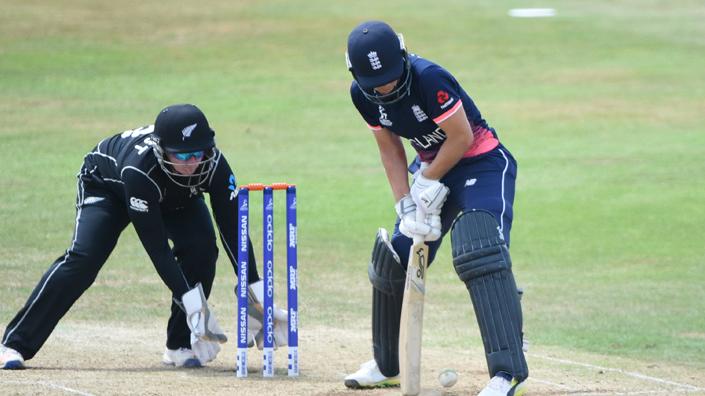
The Natmeg shot is a cricketing innovation that has left both bowlers and spectators astonished. Named after its inventor, English cricketer Joe Root, this shot is characterized by its audacity and the element of surprise it brings to the game.
Key Features of the Natmeg Shot:
- Through the Legs: The Natmeg shot involves the batsman deliberately playing the ball through their legs, often when a slower delivery or a full toss is bowled. This unexpected stroke catches fielders and bowlers off guard.
- Wrist Control: Wrist control is crucial for the execution of the Natmeg shot. The batsman uses their wrists to guide the ball through their legs, choosing the right moment to play the shot.
- Placement: The Natmeg shot typically results in the ball traveling behind the batsman and the wicketkeeper. The placement is such that it avoids fielders and often results in valuable runs, especially in limited-overs cricket.
- Risk and Reward: The Natmeg shot is a high-risk, high-reward shot. Batsmen need impeccable timing and judgment to execute it successfully. A mistimed shot can lead to dismissal, but when it works, it can demoralize bowlers and disrupt fielding plans.
Notable Instances of the Natmeg Shot:
| Date | Player | Match | Outcome |
|---|---|---|---|
| June 18, 2017 | Joe Root | England vs. Pakistan (ODI) | England won by 2 runs |
| March 10, 2020 | Virat Kohli | India vs. South Africa (T20 International) | India won by 8 wickets |
The Natmeg shot is a reflection of the changing dynamics of modern cricket. Batsmen like Joe Root and Virat Kohli have displayed the audacity to innovate and surprise their opponents with this unorthodox stroke.
While the Natmeg shot may not be seen as frequently as other cricket shots, its presence in the game showcases the continuous evolution and creativity of batsmen. It’s a reminder that in cricket, as in any sport, thinking outside the box can yield thrilling and game-changing results.
9. The Dilscoop
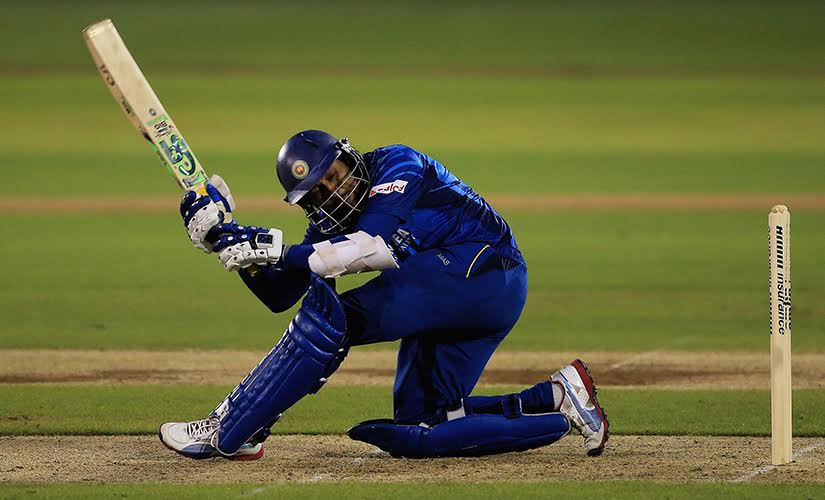
The Dilscoop, a remarkable cricket shot named after its originator, Sri Lankan cricketer Tillakaratne Dilshan, is a stroke that combines innovation with audacity. This unconventional shot involves scooping a delivery from a fast bowler over the wicketkeeper’s head and towards the fine leg region, often leaving fielders and bowlers dumbfounded.
Key Characteristics of the Dilscoop:
- Scooping Technique: The Dilscoop is executed by the batsman scooping the ball over their shoulder with a quick wrist movement, usually against deliveries that are pitched in the blockhole or just short of a length.
- Surprising Bowlers: Bowlers often target the batsman’s toes with yorker-length deliveries in the death overs. The Dilscoop counters this strategy, catching the bowlers off-guard as they try to restrict the batsman’s scoring options.
- Precision Placement: The success of the Dilscoop relies heavily on precision placement. Batsmen aim to guide the ball over the wicketkeeper’s head and fine enough to clear the boundary ropes while avoiding the fielders.
- High-Risk, High-Reward: The Dilscoop is considered a high-risk, high-reward shot. Perfect execution can lead to boundary fours or sixes, but mistiming can result in dismissals. It requires exceptional timing and confidence.
Notable Instances of the Dilscoop:
| Date | Player | Match | Outcome |
|---|---|---|---|
| June 21, 2009 | Tillakaratne Dilshan | Sri Lanka vs. Pakistan (ICC World Twenty20) | Sri Lanka won by 8 wickets |
| April 6, 2014 | Glenn Maxwell | Kings XI Punjab vs. Sunrisers Hyderabad (IPL) | Kings XI Punjab won by 72 runs |
The Dilscoop has added a thrilling dimension to modern cricket. Batsmen like Tillakaratne Dilshan and Glenn Maxwell have demonstrated its effectiveness, particularly in the limited-overs format, where innovation and audacity can make all the difference.
While the Dilscoop is considered unconventional, it symbolizes the ever-evolving nature of cricket. It encourages batsmen to think outside the box, reminding us that even in a traditional sport, creativity can be a game-changer and a source of excitement for fans worldwide.
10. The Scoop Shot
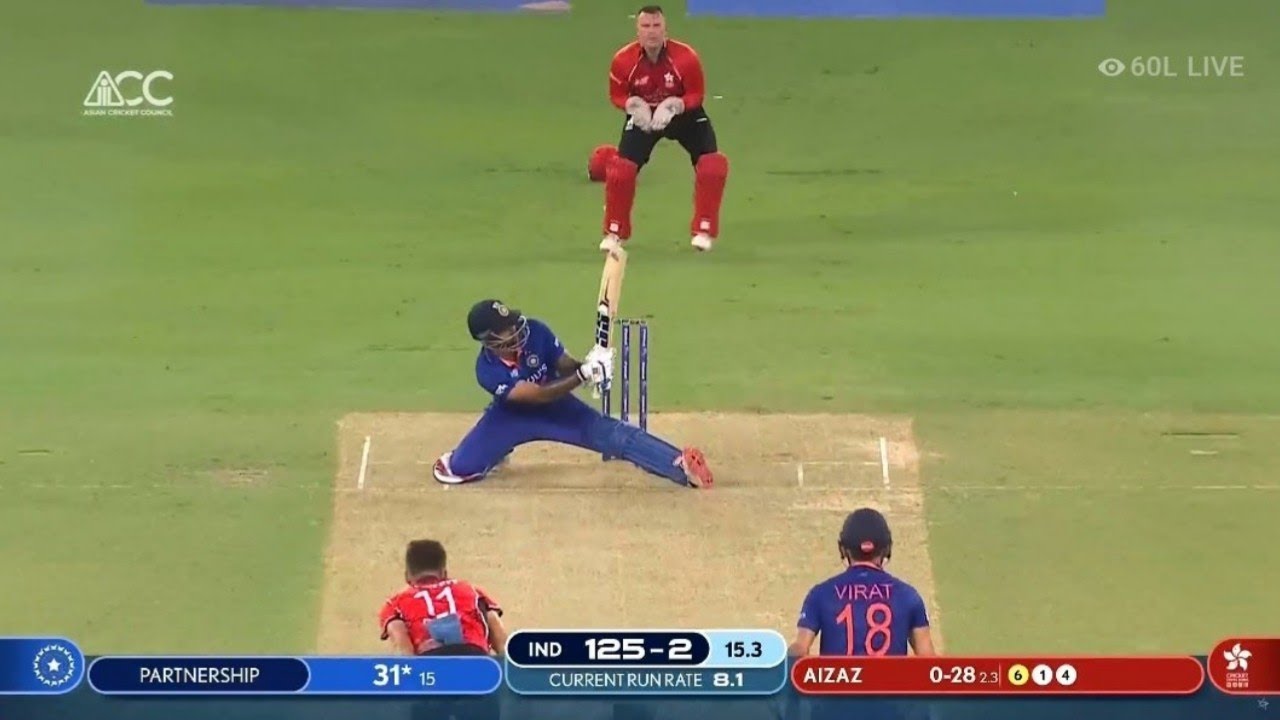
The scoop shot, also known as the ramp shot or the paddle scoop, is a versatile and audacious cricket stroke that showcases a batsman’s ability to adapt and innovate in the sport. This shot is particularly effective in limited-overs formats and can be used against both fast and spin bowling.
Key Aspects of the Scoop Shot:
- Ramp Movement: The scoop shot involves a subtle flick of the wrists at the last moment, allowing the batsman to lift the ball over the wicketkeeper or fielders in the infield. This technique creates an arc that guides the ball safely to the boundary.
- Delivery Selection: Batsmen typically employ the scoop shot against yorker-length deliveries or slower balls, exploiting the pace or lack thereof to deceive the fielding side.
- Precision Placement: The success of the scoop shot relies on precision placement. Batsmen aim to direct the ball into gaps in the field, often targeting areas where fielders are sparse, such as fine leg or third man.
- Variations: The scoop shot has several variations, including the paddle scoop, which is played fine towards the leg side, and the traditional scoop, which aims to lift the ball straight over the wicketkeeper.
Notable Instances of the Scoop Shot:
| Date | Player | Match | Outcome |
|---|---|---|---|
| April 2, 2011 | M.S. Dhoni | India vs. Sri Lanka (ICC Cricket World Cup Final) | India won by 6 wickets |
| June 22, 2014 | Eoin Morgan | England vs. India (ODI) | England won by 3 wickets |
The scoop shot has evolved to become an integral part of a batsman’s repertoire in modern cricket. Players like M.S. Dhoni and Eoin Morgan have demonstrated its effectiveness in high-pressure situations, where quick runs are vital.
While the scoop shot is a high-risk stroke, it exemplifies the innovation and adaptability that define modern cricket. Batsmen who can successfully incorporate it into their game add an element of unpredictability that keeps bowlers and fielding sides on their toes.
In an era where boundary-hitting has become increasingly important, the scoop shot continues to captivate cricket fans with its audacious execution and potential to change the course of a match.
11. The Slog Sweep
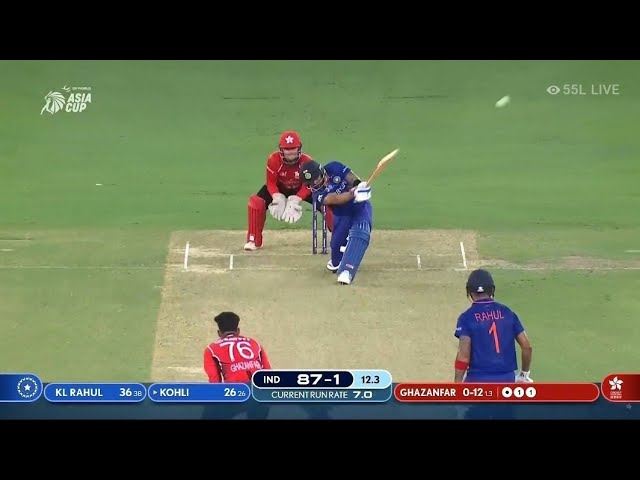
The slog sweep, often referred to simply as the “slog,” is a powerful and audacious cricket shot that combines strength and timing. This shot is primarily used against spin bowling and is a favorite among batsmen in limited-overs formats for clearing the boundary ropes.
Key Characteristics of the Slog Sweep:
- Power and Timing: The success of the slog sweep relies on the batsman’s ability to generate power and time their shot perfectly. It involves hitting the ball with the full swing of the bat to achieve maximum distance.
- Spin Bowler Target: The slog sweep is typically employed against spin bowlers, especially when they pitch the ball in a length that allows the batsman to get underneath it.
- Clearing the Boundary: The primary objective of the slog sweep is to clear the boundary ropes. Batsmen aim to send the ball sailing over the mid-wicket or deep square leg region for a maximum.
- High-Risk, High-Reward: The slog sweep is considered a high-risk shot due to the potential for mistimed hits, leading to dismissals. However, when executed successfully, it can turn the tide of a match in favor of the batting side.
Notable Instances of the Slog Sweep:
| Date | Player | Match | Outcome |
|---|---|---|---|
| March 2, 2003 | Yuvraj Singh | India vs. Pakistan (ICC Cricket World Cup) | India won by 6 wickets |
| April 3, 2016 | Carlos Brathwaite | West Indies vs. England (ICC World Twenty20 Final) | West Indies won by 4 wickets |
The slog sweep epitomizes the aggressive approach of modern cricket. Batsmen like Yuvraj Singh and Carlos Brathwaite have demonstrated that this shot can not only change the course of a game but also become iconic moments in cricketing history.
While the slog sweep carries a degree of risk, it remains a crucial weapon in a batsman’s arsenal, especially in the shorter formats of the game. It exemplifies the balance between power and precision and continues to enthrall cricket enthusiasts with its dramatic impact on matches.
In an era where boundaries are in high demand, the slog sweep showcases the fearless mindset of batsmen who are willing to take on the challenge and provide fans with exhilarating moments of cricketing brilliance.
12. The Reverse Ramp Shot

The reverse ramp shot is a highly innovative and audacious cricket stroke that has gained popularity in limited-overs formats. This shot involves a combination of skill, timing, and adaptability, allowing batsmen to surprise bowlers and fielding teams.
Key Characteristics of the Reverse Ramp Shot:
- Reverse Batting Stance: The most distinctive feature of the reverse ramp shot is that the batsman adopts a reverse batting stance. For example, a right-handed batsman becomes a left-hander and vice versa, changing their grip accordingly.
- Timing and Precision: Timing is critical in executing the reverse ramp shot. Batsmen need to move quickly into the new stance and adjust their positioning to make contact with the ball’s trajectory and guide it over the wicketkeeper or slips.
- Surprising Bowlers: The reverse ramp shot often catches bowlers off-guard, as they are accustomed to specific field placements and bowling lines. Batsmen use this shot to counter fielding strategies and target gaps.
- Variations: There are variations of the reverse ramp shot, including the reverse ramp sweep and the reverse paddle, depending on the bowler’s length and line. These variations add complexity to the shot selection.
Notable Instances of the Reverse Ramp Shot:
| Date | Player | Match | Outcome |
|---|---|---|---|
| August 26, 2017 | Fakhar Zaman | Pakistan vs. World XI (T20 International) | Pakistan won by 33 runs |
| February 21, 2021 | Glenn Maxwell | Australia vs. New Zealand (T20 International) | Australia won by 64 runs |
The reverse ramp shot is a testament to the evolving nature of cricket. Batsmen like Fakhar Zaman and Glenn Maxwell have showcased its effectiveness, making it a valuable addition to their arsenal, particularly in the fast-paced world of T20 cricket.
While the reverse ramp shot may be considered a high-risk stroke, its ability to disrupt the opposition’s plans and create thrilling moments on the field cannot be underestimated. It exemplifies the creative and daring spirit of modern cricket, where innovation knows no bounds.
As the game of cricket continues to adapt and surprise, the reverse ramp shot stands as a symbol of a batsman’s ingenuity, capable of turning conventional strategies on their head and leaving spectators in awe.
13. The Snake Shot
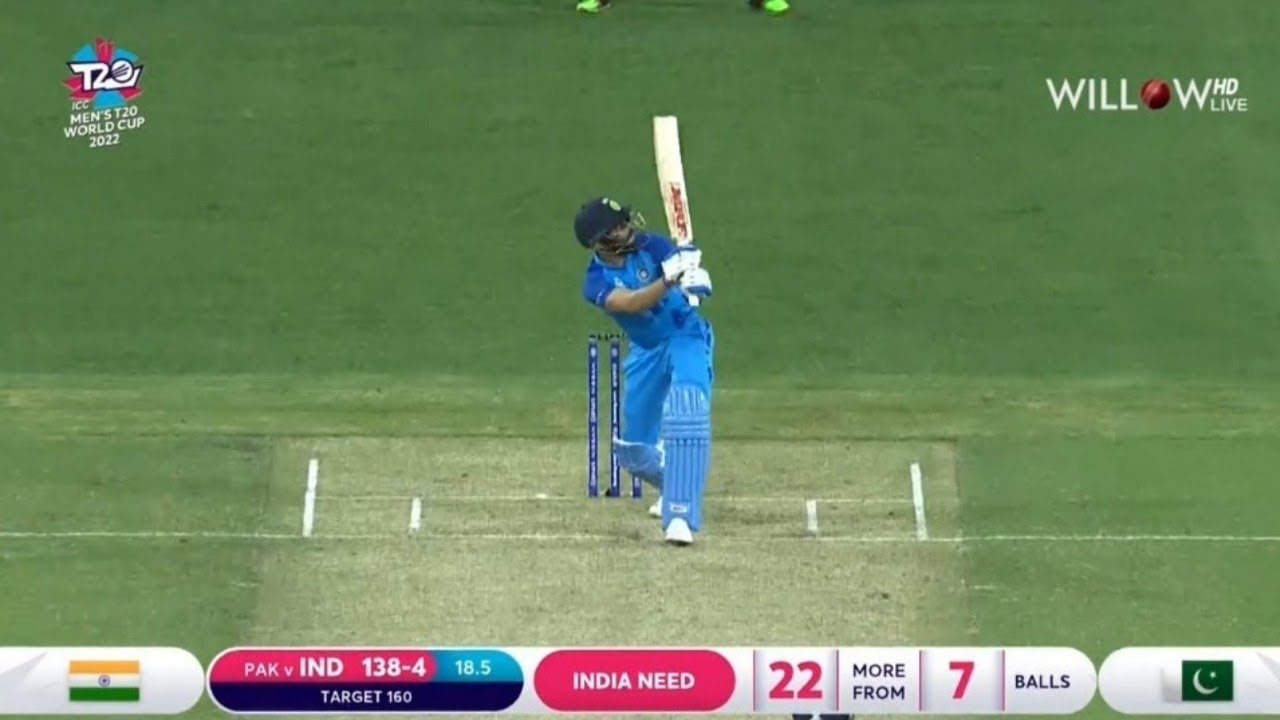
The snake shot, also known as the “sliding sweep,” is a distinctive and unconventional cricket stroke that has gained attention for its unorthodox execution. This shot is primarily used against spin bowling and requires exceptional wrist control and timing.
Key Characteristics of the Snake Shot:
- Unique Wrist Movement: The snake shot involves a unique wrist movement where the batsman flicks the ball behind their legs, similar to a leg glance but with a distinct downward and backward flick of the wrists.
- Against Spin Bowling: Batsmen often employ the snake shot against spin bowlers, especially when they pitch the ball on a length that allows the batsman to get into position for the shot.
- Placement and Timing: Successful execution of the snake shot requires precise placement and impeccable timing. Batsmen aim to guide the ball fine of the leg slip fielder and the wicketkeeper to find gaps in the field.
- Unpredictability: The snake shot is known for its unpredictability, as fielding teams and bowlers are seldom prepared for this unorthodox stroke. It can disrupt the bowler’s line and length, making it a challenging shot to counter.
Notable Instances of the Snake Shot:
| Date | Player | Match | Outcome |
|---|---|---|---|
| October 7, 2017 | Ross Taylor | New Zealand vs. India (ODI) | New Zealand won by 6 wickets |
| February 13, 2019 | Mohammad Hafeez | Pakistan vs. South Africa (T20 International) | Pakistan won by 27 runs |
The snake shot is a testament to the creativity and adaptability of batsmen in modern cricket. Players like Ross Taylor and Mohammad Hafeez have demonstrated its effectiveness, particularly when traditional shots may not yield the desired results.
While the snake shot carries a degree of risk due to its unorthodox nature, it remains a valuable tool in a batsman’s repertoire, capable of surprising the opposition and adding unpredictability to the game. It represents the constant evolution of cricket, where innovation is celebrated and rewarded.
As cricket continues to evolve, the snake shot stands as a symbol of a batsman’s ingenuity, capable of introducing new dimensions to the sport and delighting fans with its audacious execution.
14. The Flamingo Shot
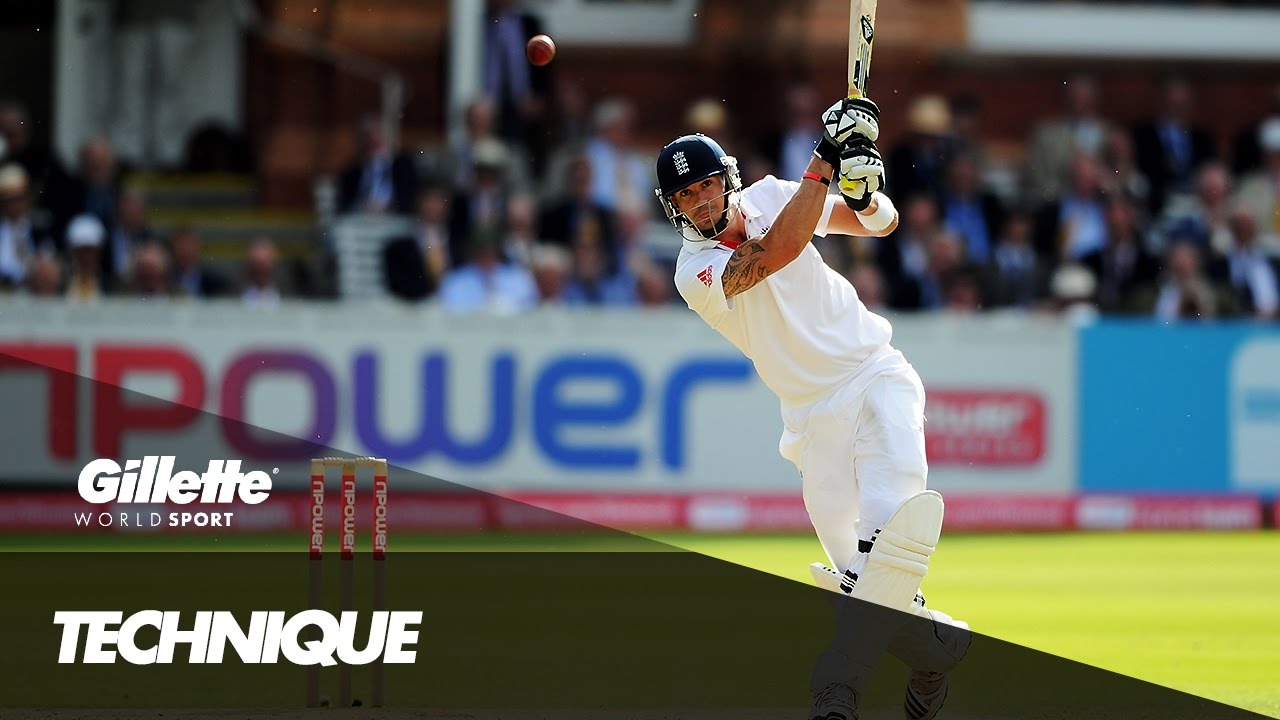
The Flamingo shot is an unorthodox and audacious cricket stroke known for its unique stance and execution. This shot is a testament to a batsman’s ability to adapt and innovate, often surprising bowlers and fielders with its sudden and unconventional approach.
Key Characteristics of the Flamingo Shot:
- Stance and Balance: The Flamingo shot involves a distinctive stance where the batsman raises one leg off the ground while making contact with the ball. The raised leg resembles a flamingo’s stance, hence the name.
- Balance and Timing: Balance is crucial for executing the Flamingo shot effectively. Batsmen need impeccable timing to play this shot and often rely on their wrists to guide the ball to the desired location.
- Variations: There are variations of the Flamingo shot, including the Flamingo pull, where the batsman lifts their leg to clear a short-pitched delivery, and the Flamingo flick, used against deliveries on the leg side.
- Surprising Bowlers: The Flamingo shot is known for its surprise element. Bowlers and fielding teams are usually unprepared for this unconventional stroke, making it a challenging shot to counter.
Notable Instances of the Flamingo Shot:
| Date | Player | Match | Outcome |
|---|---|---|---|
| January 12, 2018 | David Warner | Australia vs. England (ODI) | Australia won by 3 wickets |
| March 7, 2019 | AB de Villiers | South Africa vs. India (T20 International) | South Africa won by 6 runs |
The Flamingo shot showcases the audacity and adaptability of batsmen in modern cricket. Players like David Warner and AB de Villiers have demonstrated its effectiveness, particularly in high-pressure situations where unconventional strokes can yield significant results.
While the Flamingo shot is considered unconventional and carries an element of risk, it remains an exciting addition to a batsman’s arsenal, capable of surprising opponents and adding unpredictability to the game. It symbolizes the ever-evolving nature of cricket, where innovation and creativity are celebrated.
As cricket continues to evolve, the Flamingo shot serves as a reminder that thinking outside the box can lead to thrilling moments on the field and captivate fans with its audacious execution.
15. The Twirl Shot
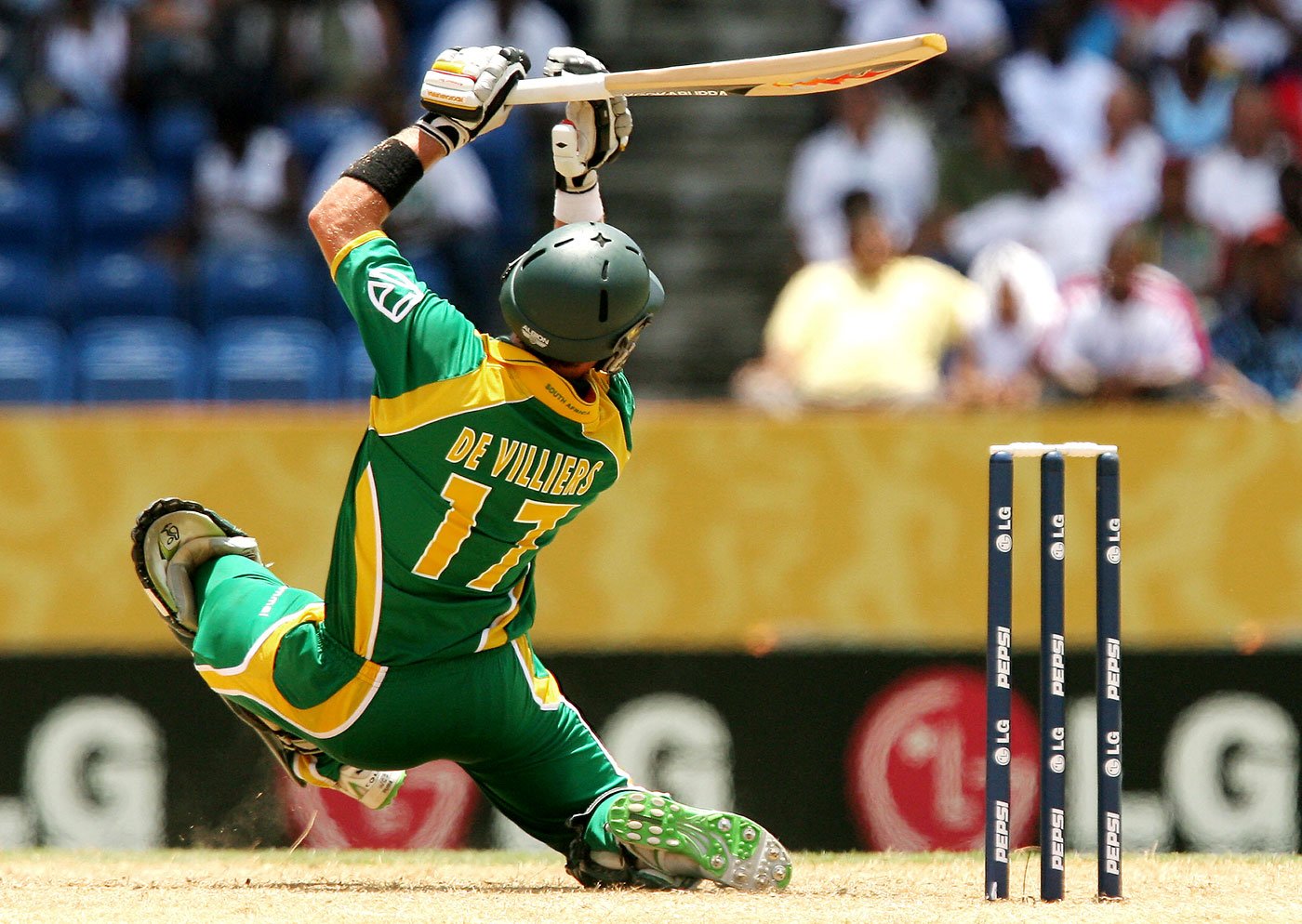
The Twirl shot is a unique and innovative cricket stroke that has gained popularity for its unorthodox execution and the element of surprise it brings to the game. This shot showcases a batsman’s ability to adapt and innovate, often leaving bowlers and fielders puzzled.
Key Characteristics of the Twirl Shot:
- 360-Degree Rotation: The Twirl shot involves a 360-degree rotation of the body after making contact with the ball. The batsman twists their body to guide the ball to various parts of the field, often behind the wicketkeeper or between fielders.
- Quick Footwork: Batsmen executing the Twirl shot rely on quick footwork and hand-eye coordination to position themselves for the rotation and placement of the ball.
- Surprising Bowlers: The Twirl shot is known for its surprise element. Bowlers and fielding teams are seldom prepared for this unconventional stroke, making it a challenging shot to counter.
- Variations: There are several variations of the Twirl shot, including the Twirl sweep, Twirl drive, and Twirl cut, each tailored to the line and length of the delivery.
Notable Instances of the Twirl Shot:
| Date | Player | Match | Outcome |
|---|---|---|---|
| July 17, 2016 | Jos Buttler | England vs. Pakistan (ODI) | England won by 169 runs |
| February 9, 2020 | Glenn Maxwell | Australia vs. India (T20 International) | Australia won by 7 wickets |
The Twirl shot exemplifies the audacity and creativity of batsmen in modern cricket. Players like Jos Buttler and Glenn Maxwell have demonstrated its effectiveness, particularly in high-pressure situations where unconventional strokes can turn the tide in favor of the batting side.
While the Twirl shot is considered unconventional and carries an element of risk, it remains an exciting addition to a batsman’s arsenal, capable of surprising opponents and adding unpredictability to the game. It symbolizes the ever-evolving nature of cricket, where innovation and creativity are celebrated.
As cricket continues to evolve, the Twirl shot serves as a reminder that thinking outside the box can lead to thrilling moments on the field and captivate fans with its audacious execution and ability to unsettle even the most seasoned bowlers.
If it’s about personal choice, I love Rohit more than any cricketer. https://t.co/u18048j0uQ pic.twitter.com/Ce658PGAVa
— David. (@CricketFreakD3) September 23, 2023
Frequently Asked Questions (FAQ)
Q1: What are creative cricket shots?
Creative cricket shots refer to unconventional and innovative batting techniques employed by players to outwit the opposition and score runs. These shots involve unorthodox use of the bat, body positioning, and wrist movements, challenging traditional bowling strategies.
Q2: Are creative cricket shots legal?
Yes, creative cricket shots are legal as long as they adhere to the laws of the game set by the International Cricket Council (ICC). Players are allowed to use innovative shots as part of their gameplay, enhancing the excitement and unpredictability of the sport.
Q3: How do cricketers practice creative shots?
Professional cricketers dedicate extensive hours in the nets practicing various creative shots. They focus on improving their hand-eye coordination, footwork, and wrist flexibility. Coaches often provide specific drills to help players master these shots, ensuring they can execute them effectively in high-pressure situations.
Q4: Who is known for popularizing the helicopter shot?
The helicopter shot was popularized by former Indian cricketer MS Dhoni. He mastered this shot and used it remarkably during his international cricket career. The helicopter shot involves a powerful wrist movement, allowing the batsman to hit the ball with immense force and precision.
Q5: Can creative shots be risky?
Yes, creative shots carry a certain level of risk. Since these shots involve unorthodox techniques, mistiming or misjudgment can lead to dismissals. However, skilled batsmen who have practiced these shots extensively can minimize the risks and use them strategically to gain an advantage over the bowlers.
| Question | Answer |
|---|---|
| Q1: What are creative cricket shots? | Creative cricket shots are unconventional batting techniques used by players to outsmart the opposition and score runs. They involve unorthodox use of the bat, body positioning, and wrist movements. |
| Q2: Are creative cricket shots legal? | Yes, creative cricket shots are legal as long as they adhere to the laws of the game set by the International Cricket Council (ICC). |
| Q3: How do cricketers practice creative shots? | Cricketers practice creative shots by dedicating extensive hours in the nets, improving hand-eye coordination, footwork, and wrist flexibility. Coaches provide specific drills to help players master these shots. |
| Q4: Who popularized the helicopter shot? | The helicopter shot was popularized by former Indian cricketer MS Dhoni. He used this shot effectively during his international career. |
| Q5: Can creative shots be risky? | Yes, creative shots carry a certain level of risk. Mistiming or misjudgment can lead to dismissals. However, skilled batsmen can minimize risks through extensive practice. |
Conclusion
Summarize the importance of creative cricket shots in shaping the game’s evolution. Reflect on the entertainment value these shots bring to cricket enthusiasts globally. Encourage readers to appreciate the skill and innovation behind these shots, making cricket a truly remarkable sport.
